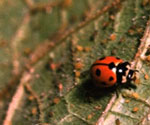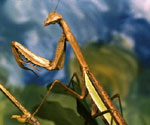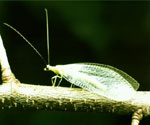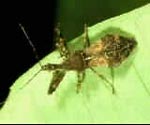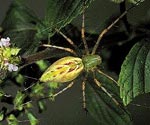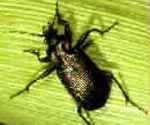Home >>> Wildlife >> Insects
Insects
Beneficial Predators | Beneficial Pollinators | Pest Insects
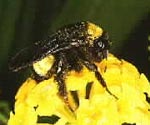 |
Bumblebees. Larger than honeybees, these stout, fuzzy bees come in variations of yellow, orange, and black. They are especially good at getting inside tightly closed flowers that have special pollination triggers only bumblebees can trip.
|
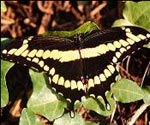 |
Giant swallowtail. At 4 to five inches across, this is Florida’s largest butterfly. It is mostly black and yellow with tail-like projections from the hindwings. |
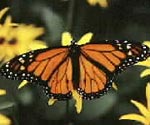 |
Monarch butterflies. Monarchs use milkweed plants as their larval food, retaining the poisons as adults. Viceroys occur wherever willow trees are available for caterpillar food. |
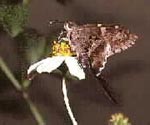 |
Long-tailed
skipper. These butterflies are dull brown flecked with
yellow or white and long, thick tails on their hindwings. One
species has iridescent blue-green patches at the bas of the wings.
Their larval food includes weedy beans and cultivated beans. |
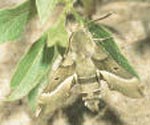 |
Sphinx
moth. Also known as hawkmoths, they usually flu between
dusk and dawn and dart between flowers using their long proboscis
to probe nectar from long, floral tubes. Their streamlined bodies
taper to a point on the abdomen and have long narrow wings. Their
larval foods include tomato and tobacco but you can find them feeding on honeysuckle
and jasmine. |
Pest
insects
Florida’s
warm and humid climate creates a breeding ground for many pest
insects. Although annoying, they provide food for other insects
and animals. Be sure to use the least toxic method of pest management
when dealing with them. |
|
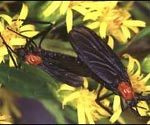 |
Love bugs. Although not native to Florida, these insects swarm the roadways twice a year, usually in May and September. Both sexes of the small black and red insects sit, crawl, and fly end-to-end during the prolonged mating bout. Least toxic control: Bugs should be washed off cars as soon as possible to prevent paint damage. |
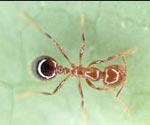 |
Fire ants. Florida hosts the imported fire ant that came from South America. Their irregular sandy mounds can be up to 3 feet across and 2 feet high. Fire ants are aggressive defenders so treat them with caution! Least toxic control: no control method permanently eliminates fire ants. Non-chemical controls include pouring hot water or a water and soap solution over mounds, but this has limited effect. Chemical controls include baits found in stores. |
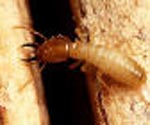 |
Termites. These soft-bodied insects live in colonies that house hundreds to thousands of individuals hidden in tunnels and burrows inside wood or in the soil beneath rotting wood. Termites chew and swallow wood but cannot digest it. Instead, microscopic organisms in their guts break down the wood into basic nutrients the termites can absorb. Least toxic control: above ground or in-ground baits. Baiting is a hit-or-miss process because the termites must find the baits themselves. If problems persist, contact a termite control specialist. |
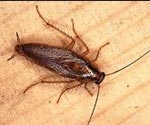 |
|
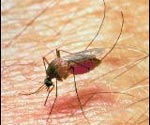 |
Mosquitoes.
Florida hosts 69 species of mosquitoes. Hatching from tiny eggs
laid in standing water, only the females suck blood in order
to produce eggs. They fly most often when the air is moist because
hot air dries out their small bodies. Fortunately many other
animals eat mosquitoes including birds, spiders, and fish.
Least toxic control: Prevention begins with sanitation and elimination
of breeding sites. Clean debris from rain gutters, eliminate
standing water, and clean out birdbaths and pet dishes often.
|


